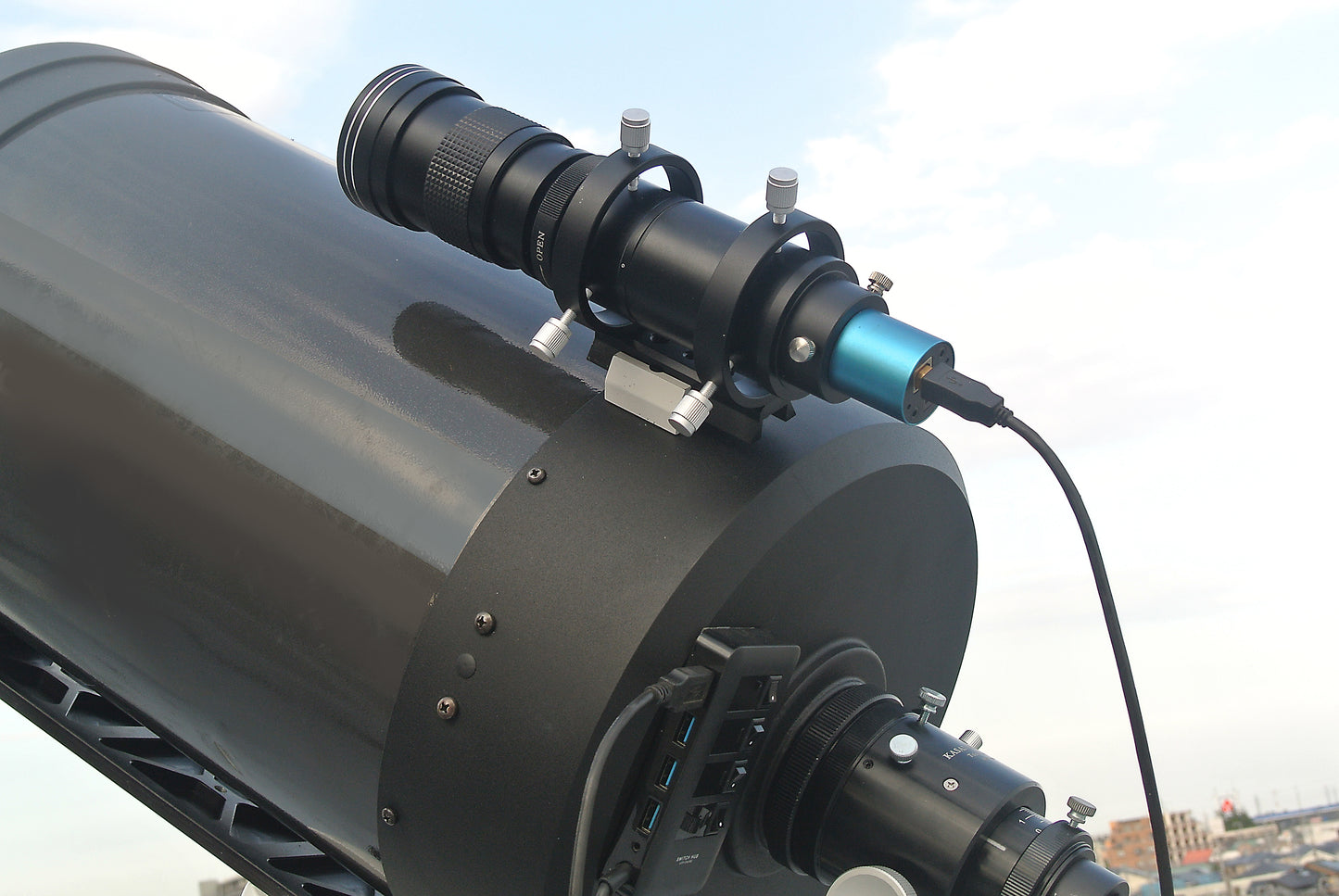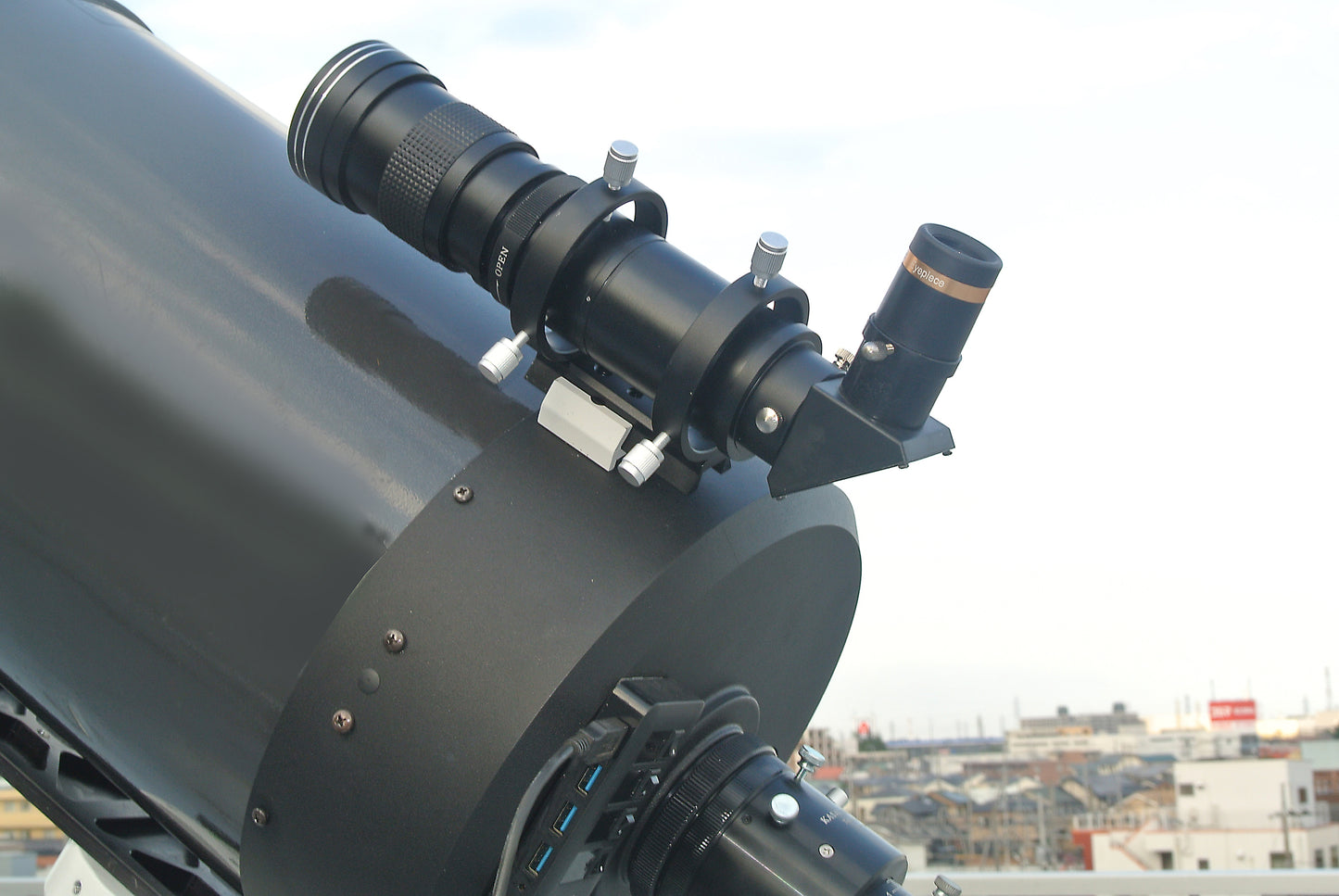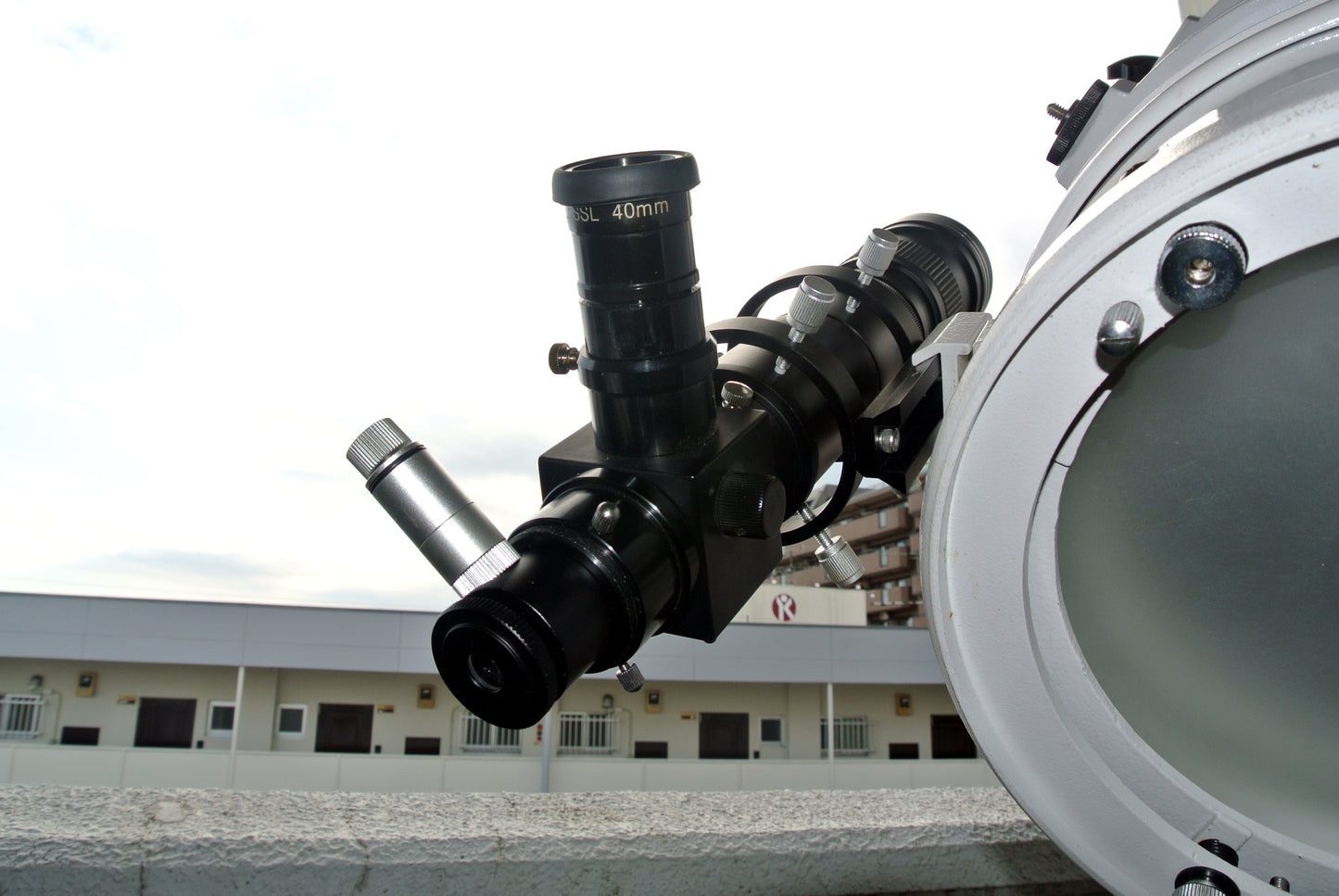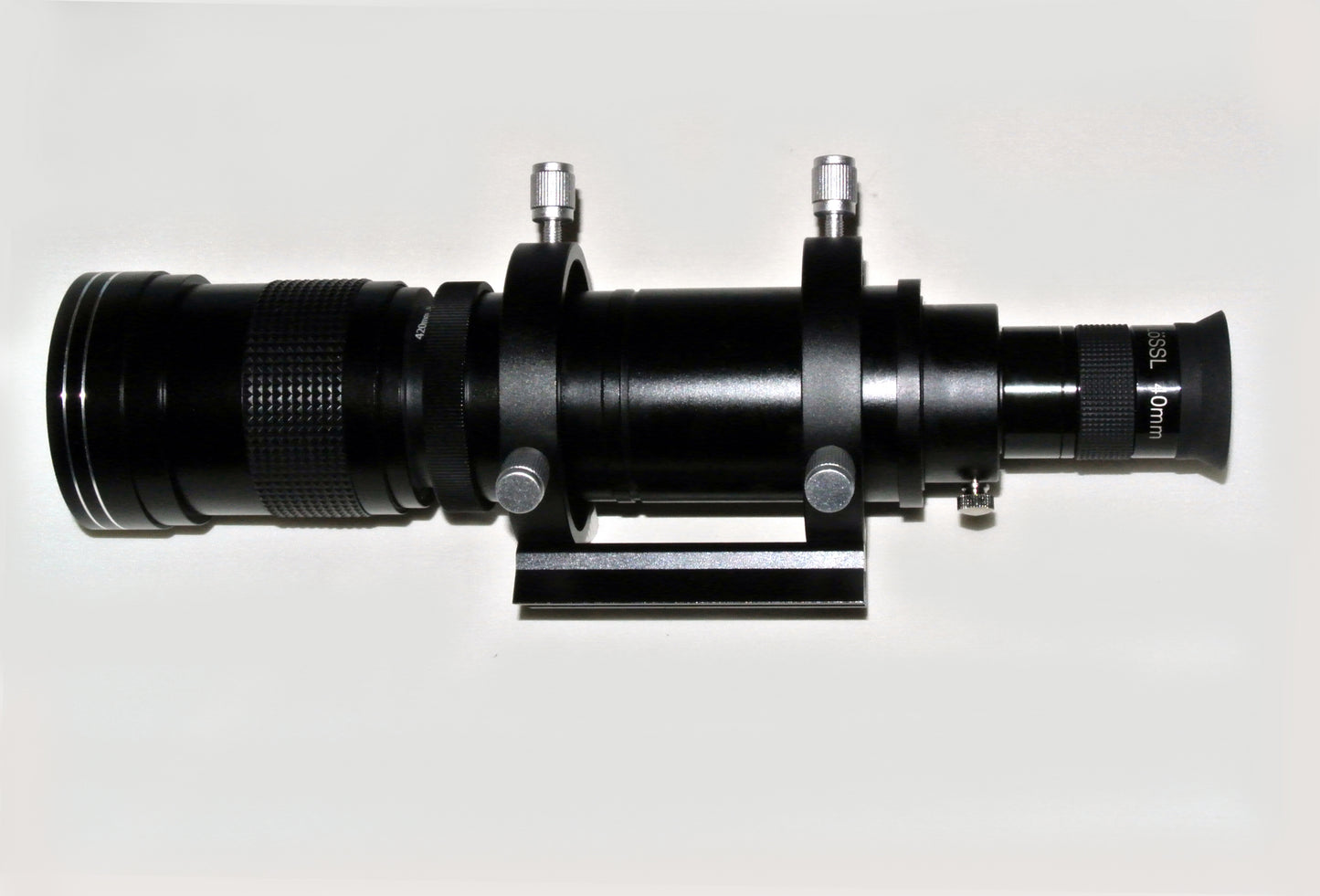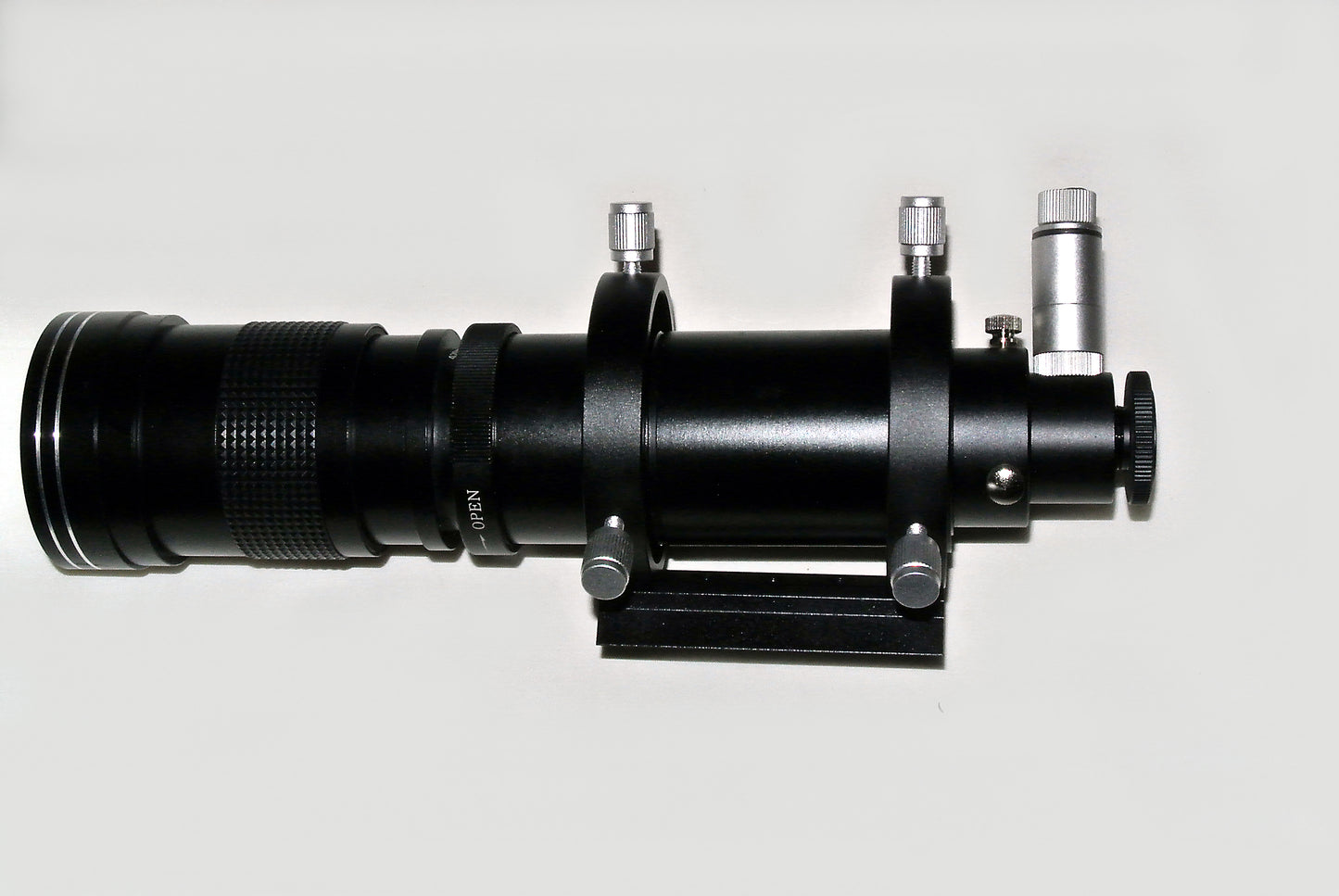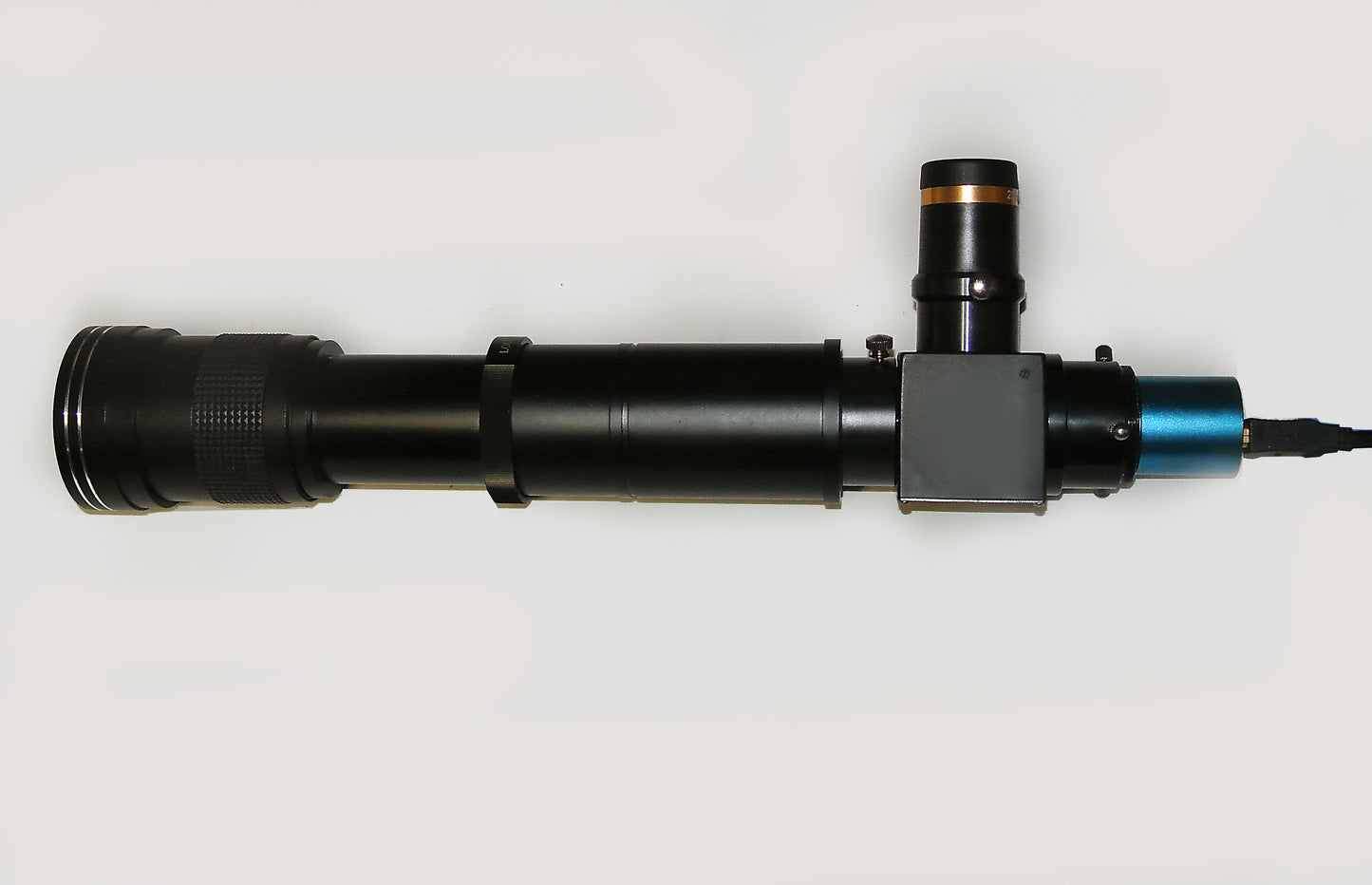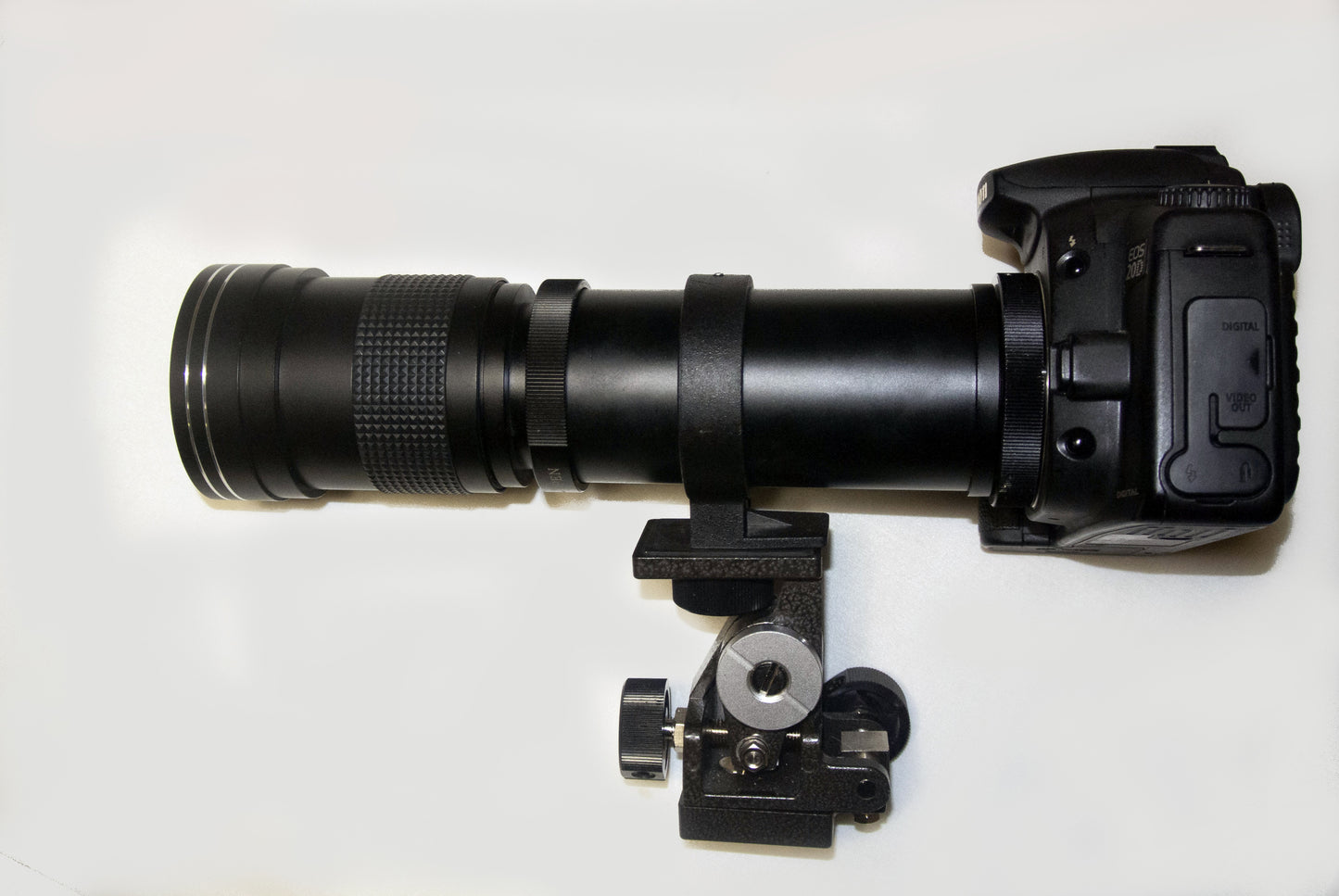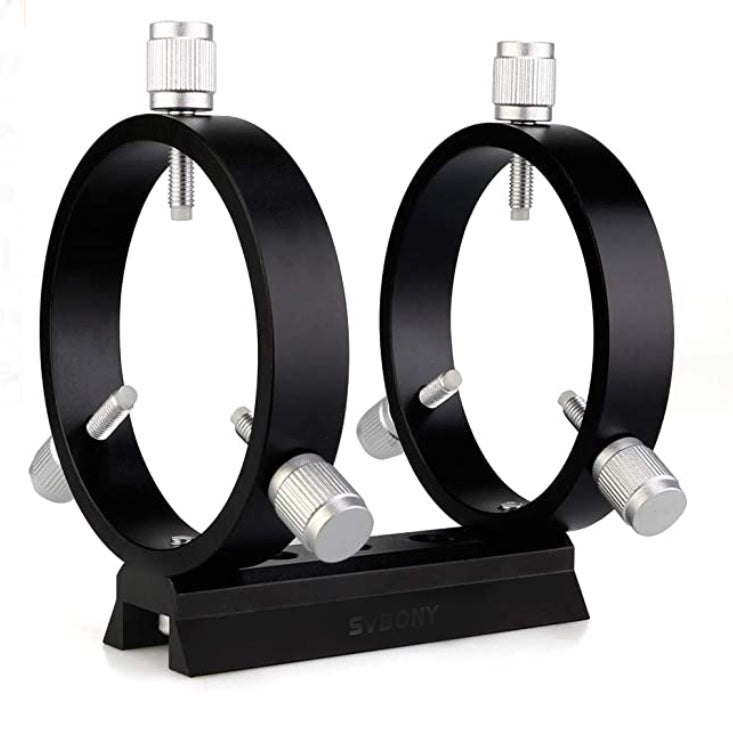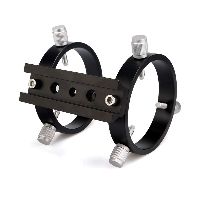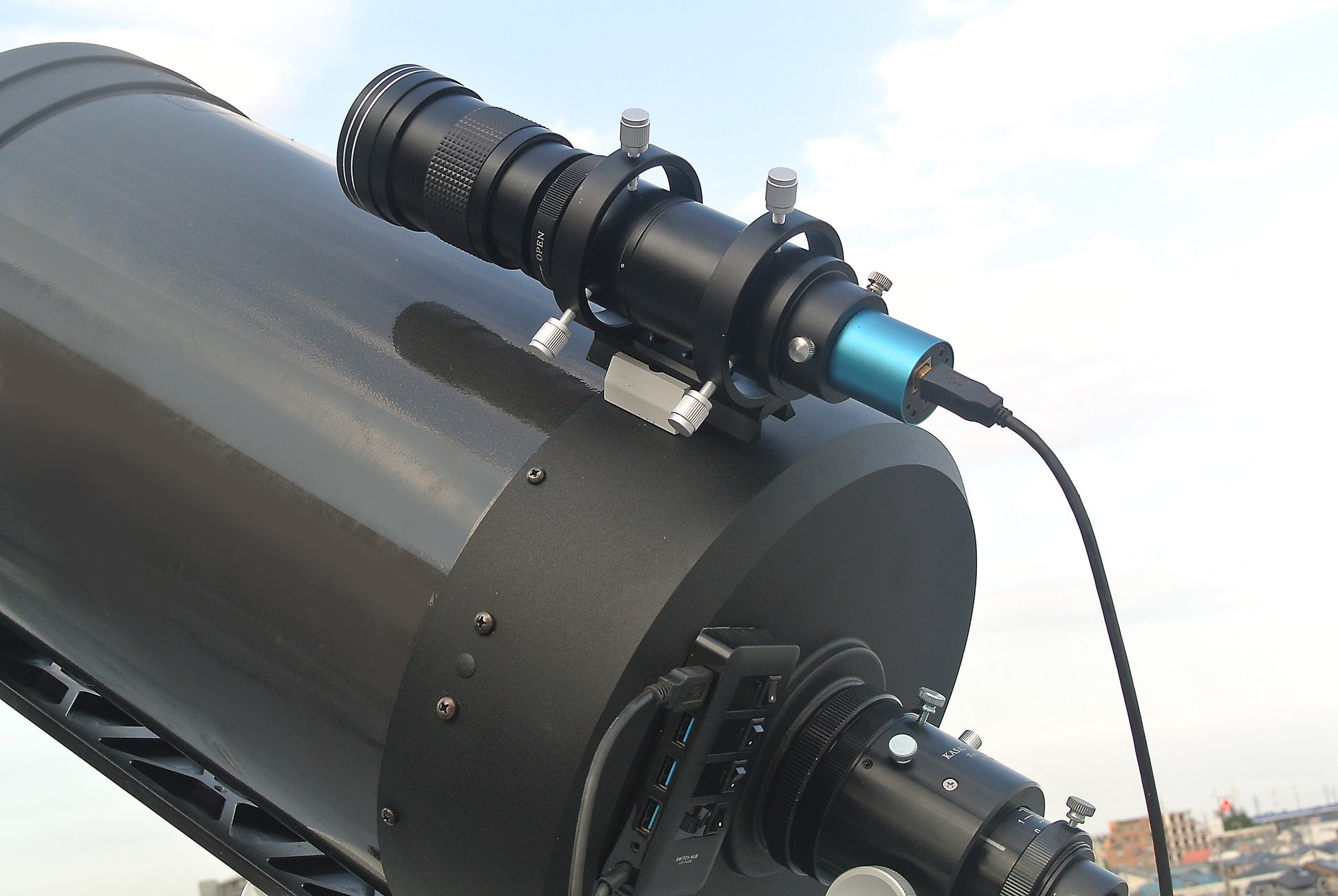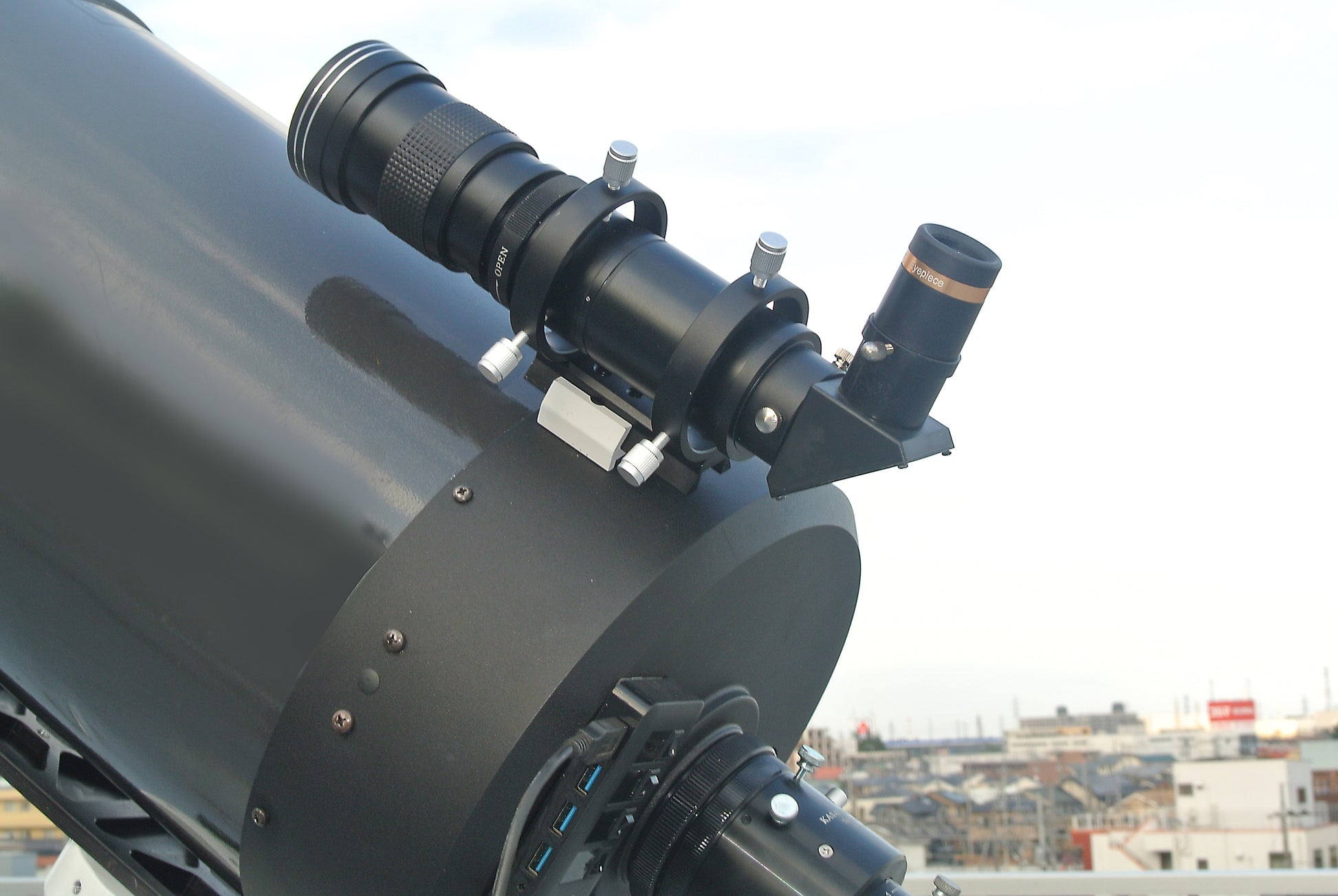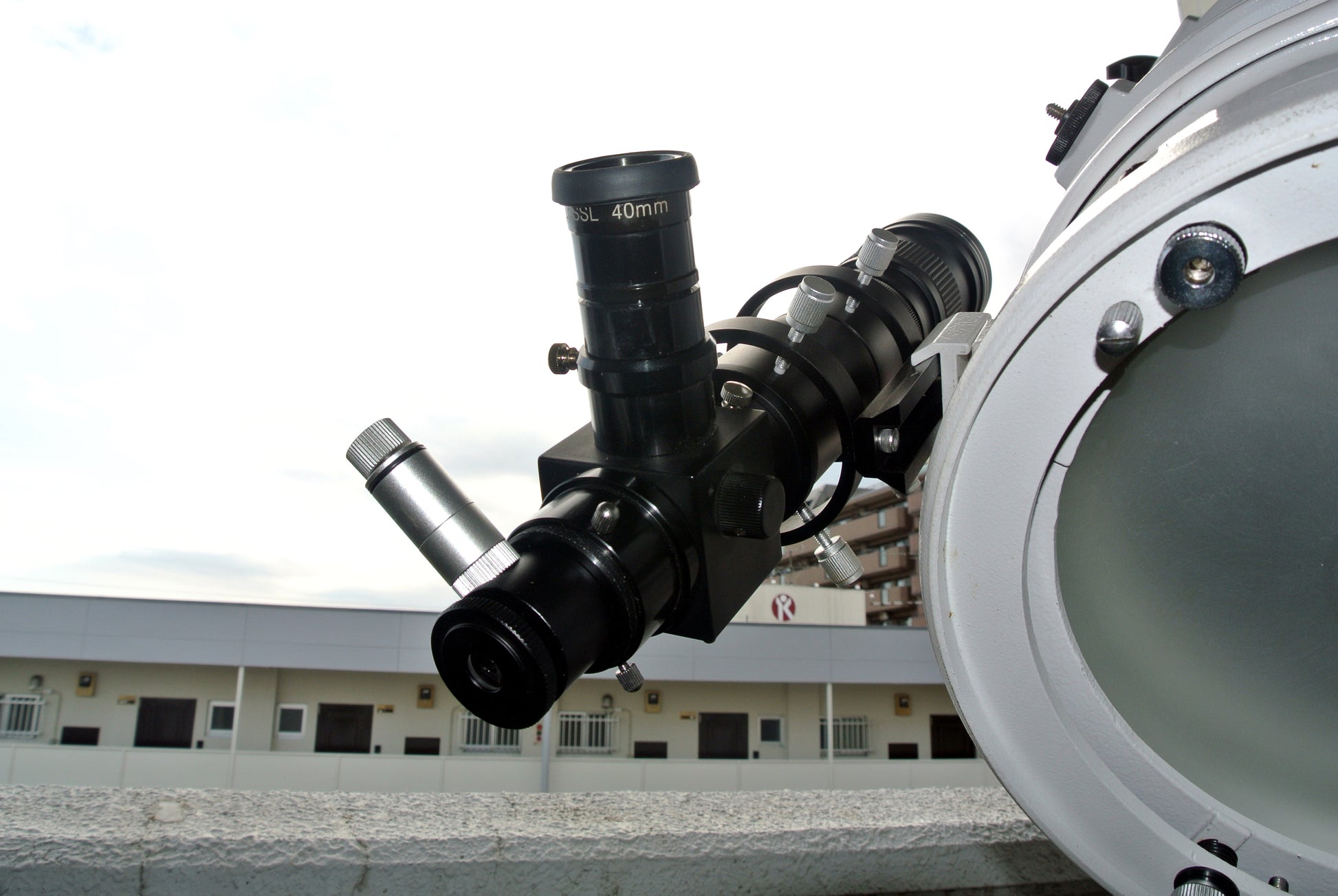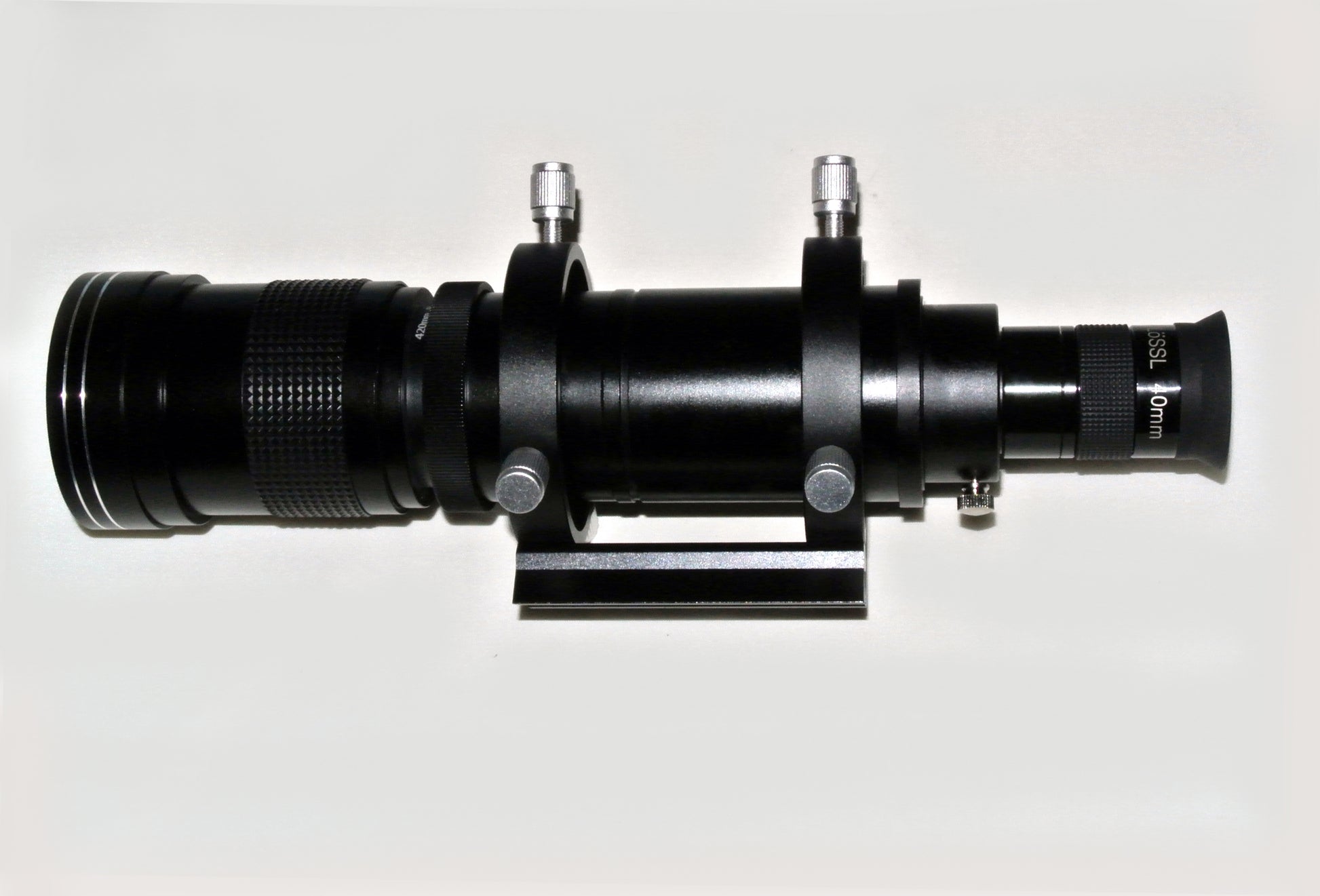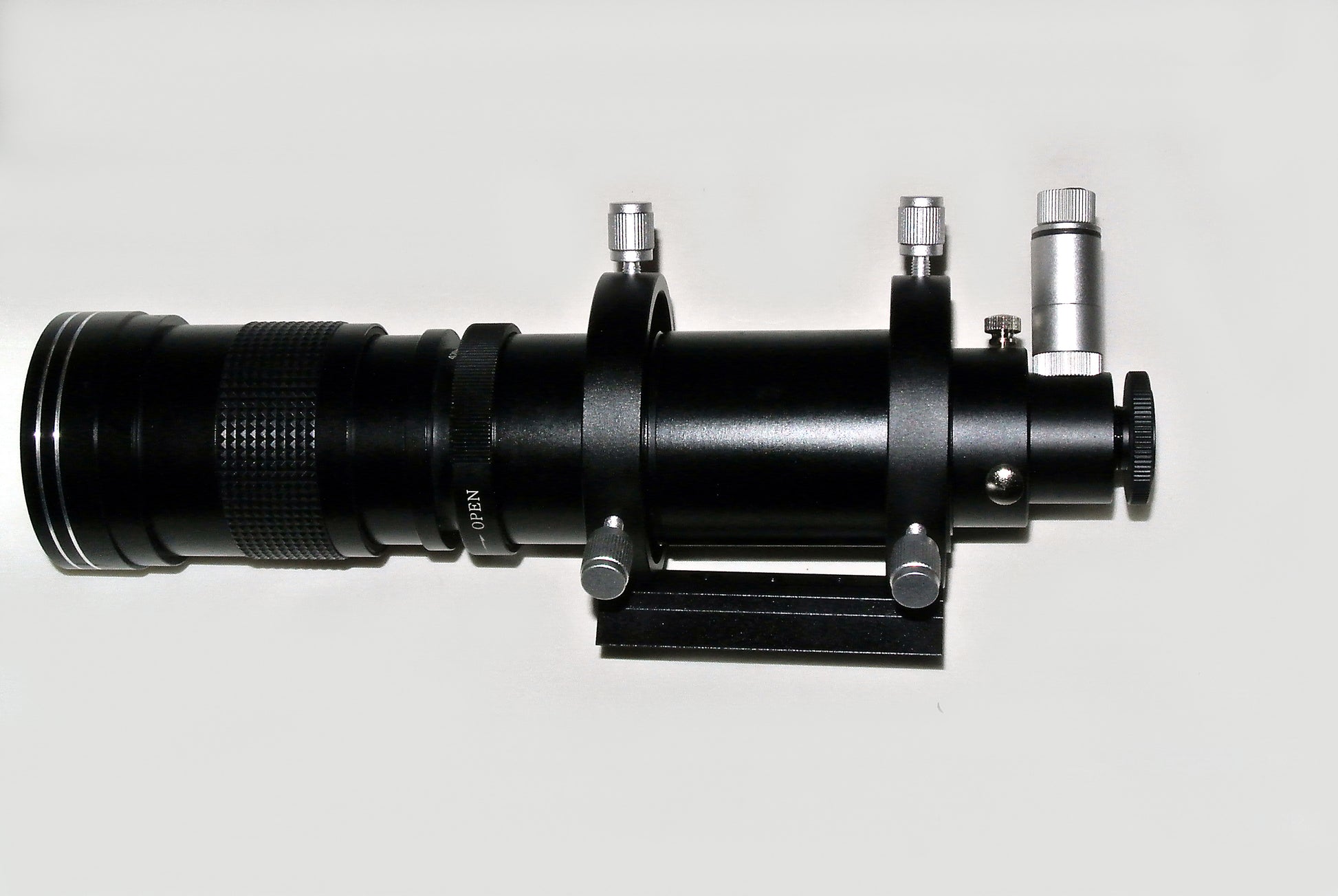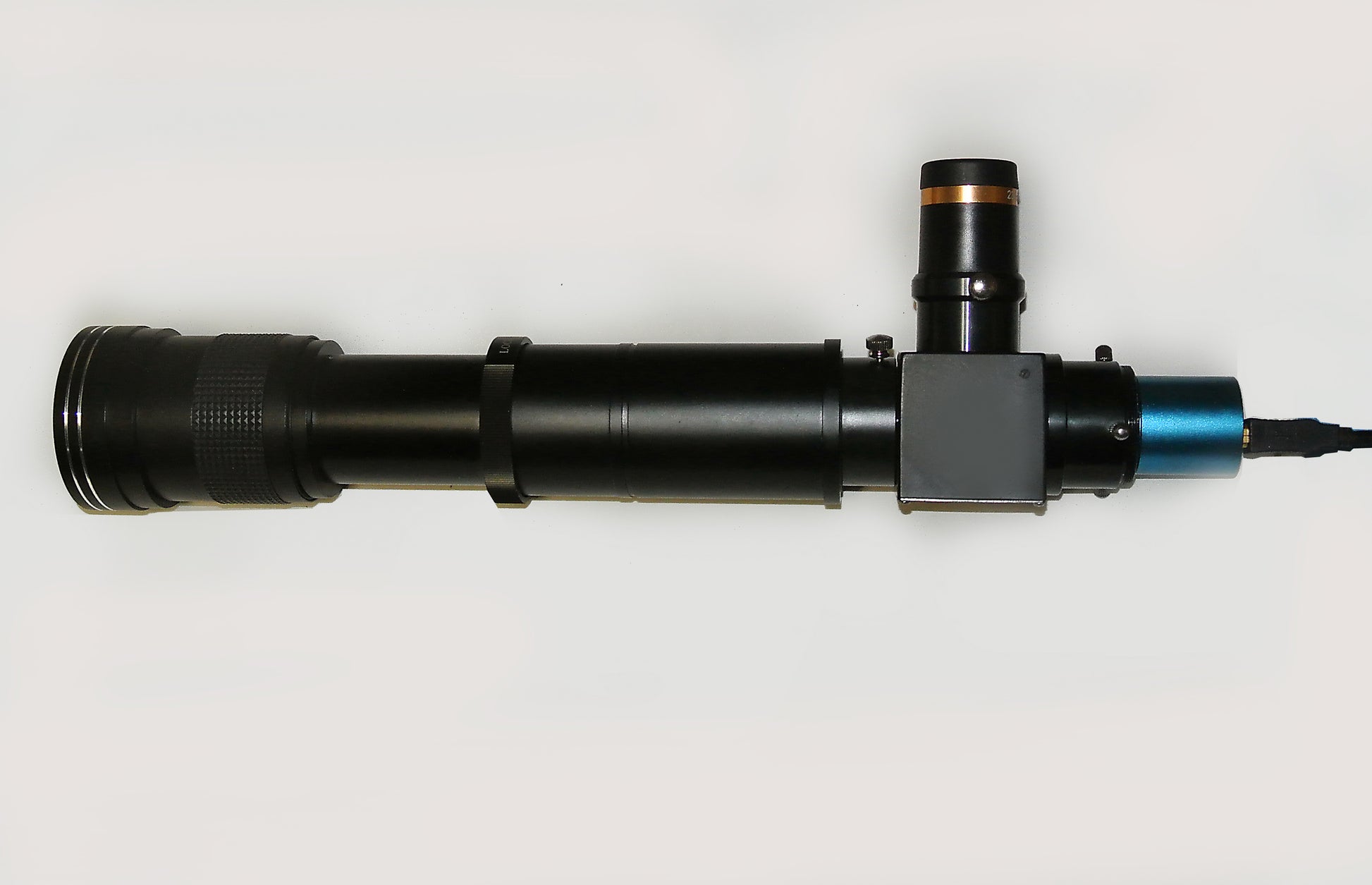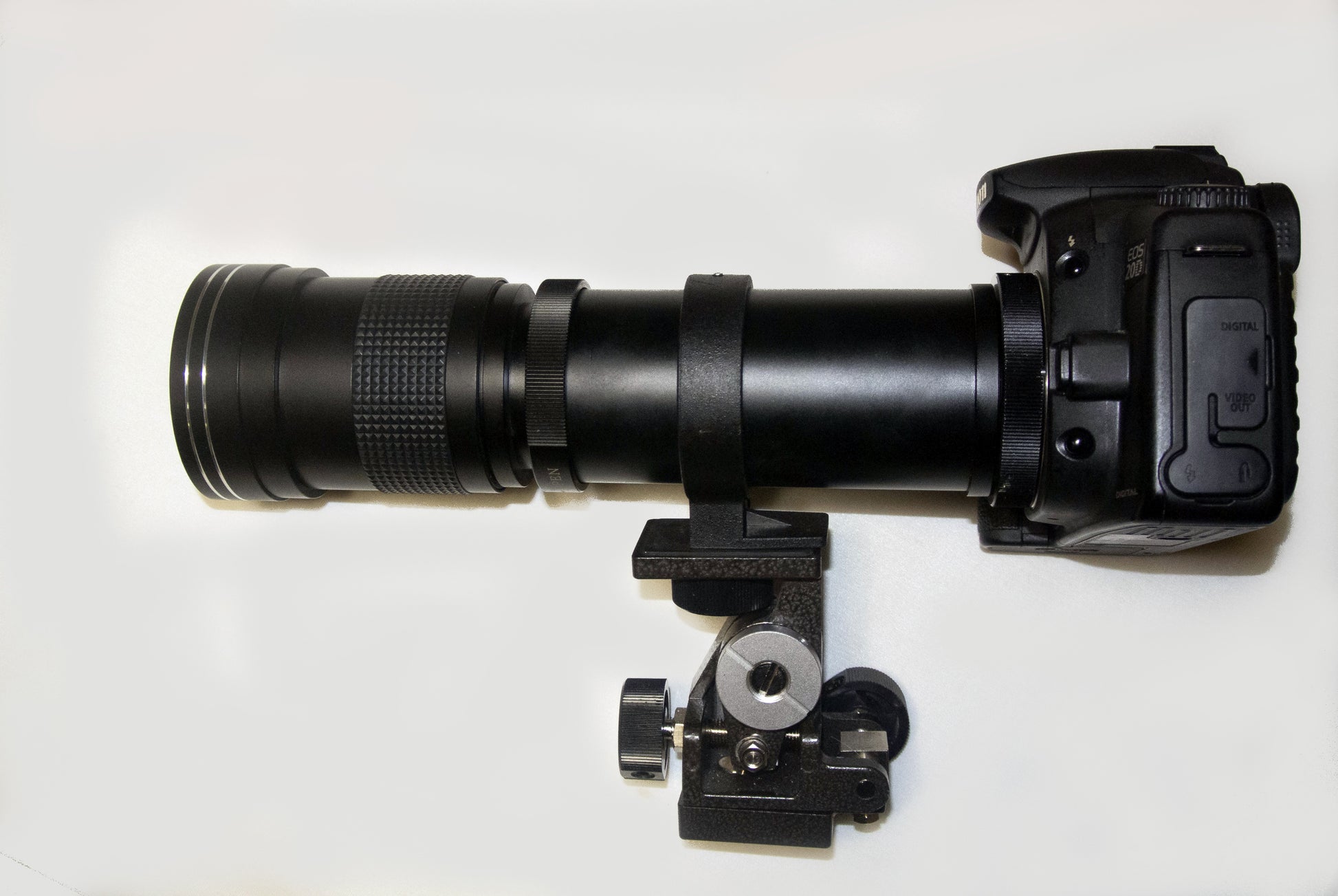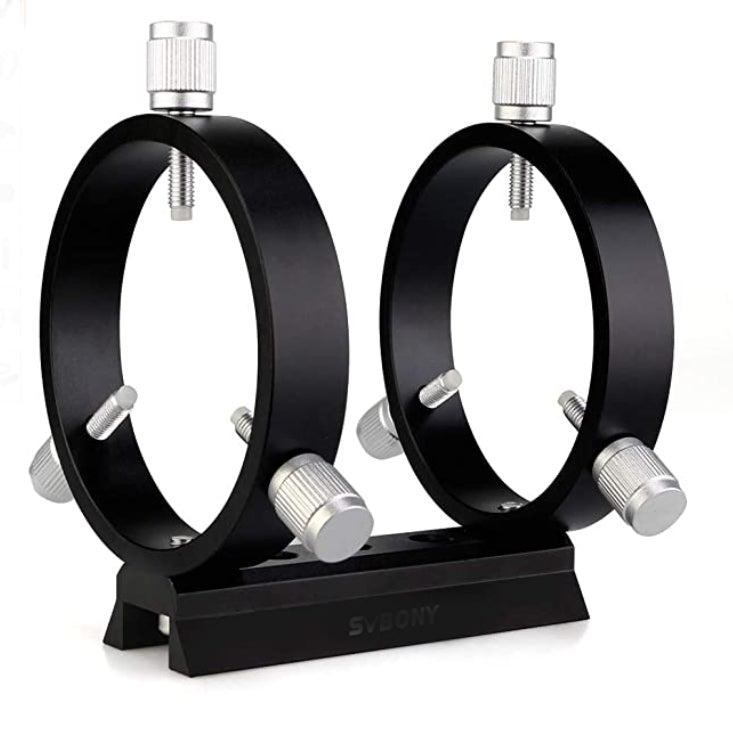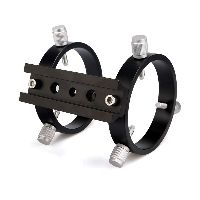StarWorks
High-performance, multi-function guide scope for a lifetime 4-element compact Low-aberration High-precision 2-year warranty
High-performance, multi-function guide scope for a lifetime 4-element compact Low-aberration High-precision 2-year warranty
Couldn't load pickup availability
We have planned this project on a limited basis because there are no available subscopes on the market that seem to perform as well as they seem to.
As shown in the photo, a zenith mirror and eyepiece can also be used.
A 6-point mount (Vixen rail) is included.
A finder or guide scope is indispensable for an astronomical telescope, but it is difficult to find one that is easy to use. The latest guide scopes are small, but they are all achromats with f/4 magnification, which distort the peripheral image and have large chromatic aberrations.
Many people use a Philip mirror when aiming at a planet or lunar crater at high magnification, but the magnification is inevitably too high and the field of view is too narrow, making it difficult to reintroduce the object if it falls out of the field of view.
In addition, for a type of telescope with a moving primary mirror such as a Schmikase, except for a refracting telescope, if a Philip mirror is inserted between the direct focal points, the focus will move backward from the designed value of the telescope body (150 mm from the surface in the case of Celeston) because of its thickness, and aberrations will increase. If you do not like to use a sub-scope, you will need to use a separate sub-scope.
In such cases, it would be nice to have a multifunctional sub-scope for viewfinder or introduction, but some telephoto and astronomical guide scopes for cameras can have an eyepiece with an adapter, but they cannot have a zenith prism because the optical path length is not long enough. There are no commercially available finders with long focal lengths with interchangeable eyepieces, so there is no other way but to make your own or special order one.
Product Features
The 31.7mm version is based on an OEM telephoto lens and has been modified to 31.7mm specifications so that the 31.7mm accessory can be used with the 4-element wide-field telephoto lens. It is characterized by good image quality and sharp, high-contrast images. Since the F value can also be lengthened, the telescope can be as good as an ED refractor when maximized, and the images are clean and free of chromatic aberration even to the periphery.
(Standard Specifications: Aperture 50mm, (filter diameter 67mm) 22cm long at f/420mm, 30cm long at f800mm, very compact.)
The focal length is f8, so there is no chromatic aberration and no curvature of the image plane, so when an eyepiece is attached, it looks very good.
The optical path length (420-800mm) can be freely changed by sliding the barrel, so all kinds of celestial parts can be attached. Moreover, the optical tube is compact and lightweight, with an actual length of only 220mm to 300mm.
As an example,
(3) Direct focus shooting is possible with a T-ring on a scope.
Although the aperture is 50mm and the body length is only 23cm to 30cm, the actual focal length can be set freely in the range of 420 to 800mm.
For focusing, the objective lens at the tip is helicoidal, enabling micron-level precision focusing.
(4) Can be attached to a 6-point finder leg for astronomical use. (80mm inner diameter included)
⑤Commercially available crosshair illumination eyepiece can be connected.
⑥ Can be used as a viewfinder with an eyepiece attached.
Even with Newtonian reflectors, for which it is troublesome to rotate the optical tube, the scope can be freely bent 90 degrees with the zenith mirror attached, allowing photographers to introduce photography without having to assume an unreasonable posture. Especially with Newtonian reflectors, it is very easy to use by attaching it to the rear of the optical tube as shown in the sample photo.
(7) It becomes an autoguide scope by attaching an astronomical camera.
The long f-number makes the image of stars small and beautiful, which improves the accuracy of guiding.
(8) Attach a commercially available 12.5mm dark-field illumination crosshair eyepiece and a 40mm eyepiece to Philip's Mirror to switch between a wide field of view and a narrow field of view.
This single unit can be used for versatile observation. We recommend this opportunity.
You can freely add and use any parts of 31.7mm and M42.
For wide field viewing, the 40mm eyepiece provides 10x magnification, while the 12.5mm eyepiece provides 36x magnification. The maximum optical path length increases the magnification by a factor of 2. Conversely, if you want to use a low magnification, you can use a 0.5x reducer (2,000 yen) to increase the magnification by 5x with a 40mm eyepiece.
No other astronomical parts are included.
| Lens Aperture |
50mm 2 counties 4 elements low aberration wide field SLR |
| Focal length | 420-800mm Variable barrel system |
| Aperture | F8 aperture 420mm F16 800mm |
| Body length | 22cm at f420mm |
| 30cm at f800mm | |
| Direct focus shooting | M42 T-ring compatible |
| Focus adjustment | Precision Helicolloid |
| Specification eyepieces | 31.7mm USA standard and M42 (T2 thread pitch for astronomical use ) |
| Material | All metal |
| Accessories |
Cap, 6-point guide mount, 31.7mm eyepiece adapter included (Others are available upon request) |
Usage Notes!
This product features the ability to use any telescope parts with the advantage of having a longer optical path length due to its variable focal length. Therefore, when the focal length is at its shortest, only direct focus photography with a camera and an eyepiece can be used.
For example, if you want to use a zenith prism, the optical path length will be insufficient, so you can use it by extending the focal length of the objective lens by approximately 50 mm.
The longer the combination of the objective lens, the longer the focal length of the objective lens should be extended.
Calculation example,
Minimum focal length of guide scope (420mm) + optical path extension distance of parts to be used (e.g. 50mm) = 470mm Total focal length of objective lens to be set
If you want to find the focal length without calculation, keep the objective focused longer, attach the parts you want to use in that state, and while excluding the scenery at infinity, lower the focal length and the point where it comes into focus will be the
default infinite focal length position.
*Because we share stock with other stores,
it may take up to 5 days to ship.
